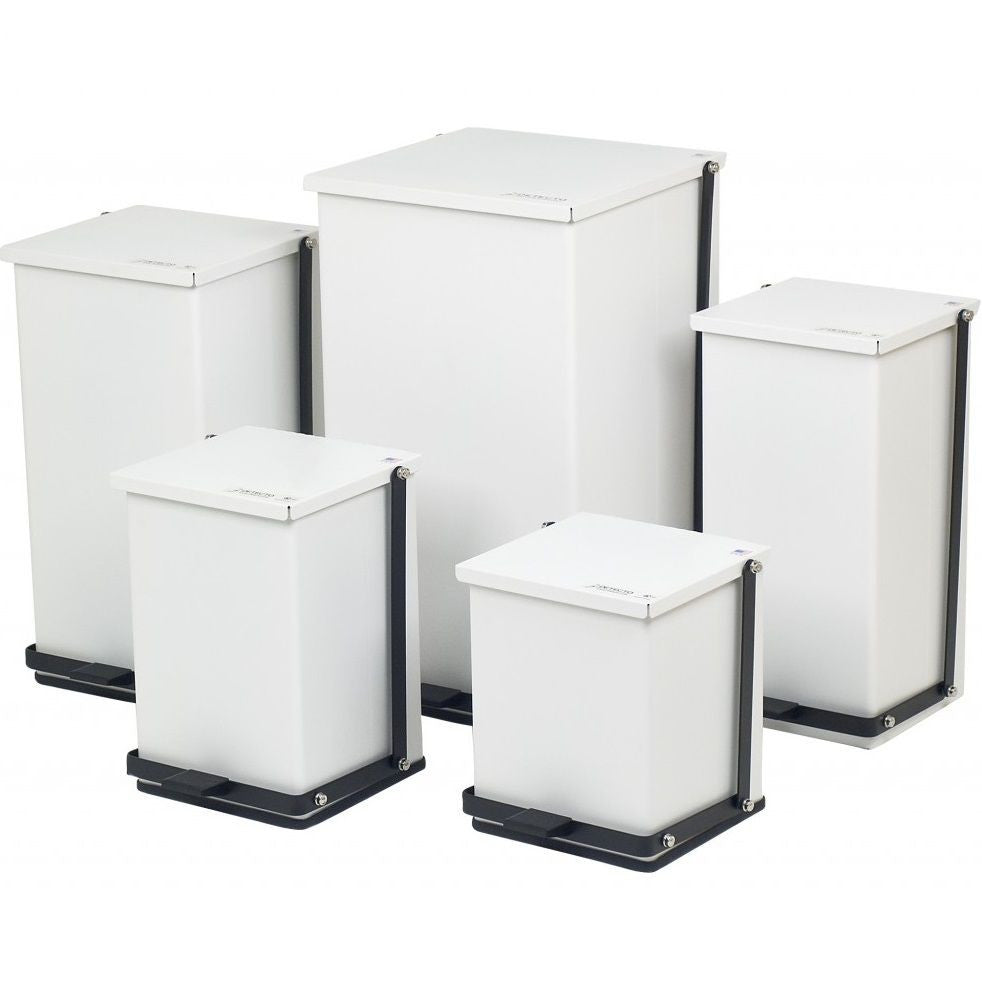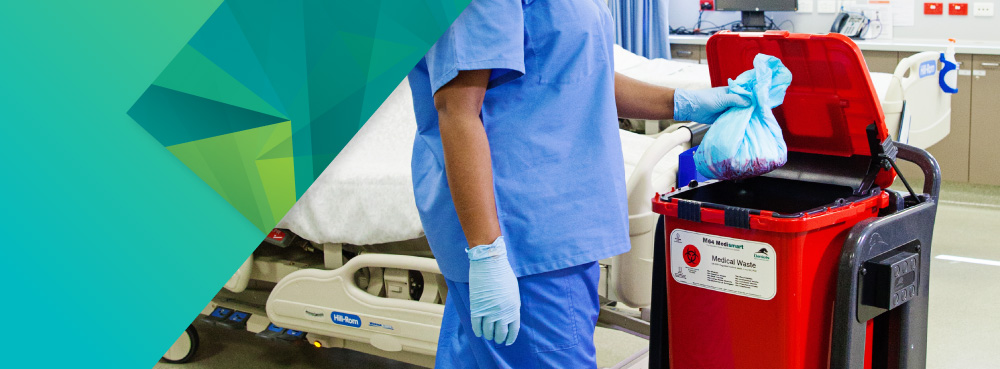Past Cleaning: Ensuring Safety And Security with Specialist Medical Waste Removal
Past Cleaning: Ensuring Safety And Security with Specialist Medical Waste Removal
Blog Article
The Significance of Appropriate Medical Garbage Disposal: An Overview for Medical Care Facilities
Proper medical waste disposal is a vital aspect of health care facility monitoring, making certain the safety and security and health of individuals, team, and the atmosphere. From recognizing the different groups of medical waste to complying with regulative requirements, healthcare facilities have to adopt effective waste segregation methods and select appropriate disposal approaches. However, the value of correct clinical garbage disposal exceeds plain conformity; it is a duty that needs recurring training and education and learning for personnel. In this overview, we will certainly explore the various aspects of medical garbage disposal and highlight the crucial actions that medical care facilities should take. By carrying out these methods, healthcare centers can alleviate threats, shield public health, and add to a cleaner, more secure setting.
Understanding Clinical Waste Categories
Understanding clinical waste categories is essential for proper disposal in healthcare facilities. Clinical waste is a wide term that includes different types of waste generated in health care setups, such as research laboratories, medical facilities, and clinics. Classifying medical waste helps make certain that it is managed, stored, and disposed of safely and in accordance with applicable regulations.
There are several classifications of clinical waste that health care centers require to be knowledgeable about. These categories consist of transmittable waste, sharps waste, pharmaceutical waste, chemical waste, and contaminated waste (medical waste disposal services with WasteX). Each classification has details characteristics and requires various disposal techniques to reduce the threat of injury to healthcare workers, individuals, and the environment
Infectious waste, for instance, refers to lose infected with possibly infectious materials, such as blood, body liquids, and tissues. Sharps waste includes needles, syringes, and other sharp objects that can create injury or transmit infections. Pharmaceutical waste includes expired or extra medications, while chemical waste includes hazardous chemicals utilized in clinical treatments. Lastly, contaminated waste includes products contaminated with radioactive compounds, such as nuclear medication products.
Compliance With Regulatory Requirements
Medical care centers need to make sure compliance with regulative demands for proper clinical waste disposal. Regulative bodies, such as the Epa (EPA) and the Occupational Safety and Health Administration (OSHA), have established standards and laws to safeguard public health and wellness and the environment. These policies lay out the proper handling, storage space, transportation, and disposal of clinical waste.
Conformity with governing needs is important for medical care facilities to stay clear of legal charges, reputational damages, and possible harm to human health and the atmosphere. Failure to abide by these policies can lead to fines, legal actions, and even the suspension or revocation of running licenses.
To guarantee conformity, healthcare facilities should establish comprehensive waste administration programs that include staff training, proper waste segregation, and making use of suitable containers and tags. Regular audits and evaluations should also be carried out to identify any type of non-compliance problems and address them immediately.
It is necessary for health care facilities to keep up to date with modifications in policies and update their waste monitoring practices as necessary. This can be attained by proactively keeping track of updates from regulatory bodies and getting involved in training programs and workshops.
Executing Efficient Waste Partition Practices
To ensure appropriate clinical garbage disposal, health care facilities must carry out reliable waste segregation techniques. Waste partition is an essential step in the overall waste administration process, as it aids decrease the risk of infection, avoids cross-contamination, and makes certain the secure disposal of various kinds of waste. Efficient waste partition methods include dividing medical waste into various groups based on its characteristics and potential hazards.
One usual practice is the segregation of sharps waste, such as needles and scalpels, from various other kinds of medical waste. Sharps waste need to be put in puncture-resistant containers to avoid injuries and prospective infections. Furthermore, contaminated materials, such as pharmaceuticals and chemicals, ought to be divided from basic medical waste to stop ecological contamination.
Appropriate labeling and color-coding of waste containers are crucial for reliable waste segregation. Noticeable and clear labels need to be positioned on each container to suggest the sort of waste it consists of and any type of special delivery requirements - medical waste disposal services with WasteX. Furthermore, color-coding can be utilized to set apart in between various waste categories, making it simpler for medical care staff to get rid of and determine of waste correctly
Regular training and education for health care team is crucial for the effective application of waste partition practices. Personnel must be educated on the different waste classifications, appropriate partition strategies, and the value of adhering to waste administration methods. This will certainly aid guarantee conformity and uniformity in waste segregation practices throughout the center.
Choosing Appropriate Disposal Techniques
Correct selection of ideal disposal methods is necessary in guaranteeing the environmentally liable and secure management of medical waste in medical care centers. Healthcare centers create a selection of clinical waste, consisting of sharps, infectious waste, pharmaceutical waste, and chemical waste - medical waste removal. Each sort of waste needs specific disposal approaches to lessen the risk of contamination, injury, and ecological harm
One common disposal technique for medical waste is incineration. Incineration entails the controlled burning of waste at high temperature levels. This technique is effective in ruining pathogens and lowering the quantity of waste. However, it can launch dangerous toxins into the air if not correctly controlled.

Chemical disinfection is one more technique used for particular kinds of medical waste, such as pharmaceutical waste. This technique makes use of chemicals medical waste disposal services with WasteX to counteract or destroy pollutants. Nevertheless, it is crucial to select chemicals that are safe and eco-friendly.
Sometimes, garbage dump disposal may be ideal for non-hazardous medical waste (medical waste disposal services with WasteX). However, correct partition and packaging are essential to prevent leak or contamination.
Inevitably, healthcare centers must thoroughly review the qualities of their medical waste and choose ideal disposal approaches that focus on safety, environmental management, and governing conformity. Regular training and surveillance are necessary to make certain that health care staff follows appropriate disposal protocols.

Training and Educating Personnel on Proper Disposal Treatments
Staff education and learning and training play a crucial duty in making certain the appropriate disposal of medical waste in healthcare centers. It is necessary that all employee, consisting of doctors, registered nurses, technicians, and assistance team, obtain comprehensive training on proper disposal procedures. This training should cover the various sorts of medical waste, their potential dangers, and the appropriate approaches for managing, setting apart, and throwing away them.
Among the main goals of staff education and learning and training is to guarantee that all healthcare specialists comprehend the value of proper disposal procedures and the potential consequences of inappropriate waste administration. They need to be familiar with the dangers connected with medical waste, such as the transmission of infections and the contamination of the setting. medical waste removal services. By comprehending these risks, personnel will certainly be a lot more determined to adhere to proper disposal protocols and take the essential preventative measures to secure themselves, their associates, and the community
Educating should likewise cover the usage of individual protective tools (PPE) and the appropriate methods for taking care of clinical waste. Personnel participants ought to be enlightened on how to determine and set apart different kinds of waste, such as sharps, contagious waste, and hazardous chemicals. They should also be trained on the correct use waste containers, such as sharps containers and biohazard bags, in addition to the importance of labeling and sealing these containers properly.
Additionally, personnel education and training must consist of normal updates and refresher programs to make certain that healthcare specialists stay educated concerning the most up to date guidelines and finest practices in clinical waste disposal. This recurring education and learning is vital to preserve a high degree of understanding and conformity among employee.
Conclusion
Finally, correct medical garbage disposal is of utmost significance for healthcare facilities. Recognizing the different groups of medical waste and adhering to governing demands guarantees the safety and health of both medical care workers and the public. Applying reliable waste partition practices and picking proper disposal methods are essential in protecting against the spread of transmittable illness and protecting the atmosphere. Training and educating team on correct disposal treatments is important for maintaining a tidy and safe health care facility.
From comprehending the various classifications of clinical waste to complying with regulative requirements, health care centers should take on reliable waste partition techniques and pick suitable disposal techniques. These classifications consist of transmittable waste, sharps waste, pharmaceutical waste, chemical waste, and radioactive waste.To ensure proper medical waste disposal, medical care facilities should apply effective waste segregation techniques. Waste segregation is a critical step in the overall waste management process, as it important source aids decrease the danger of infection, protects against cross-contamination, and guarantees the safe disposal of various types of waste. Medical care facilities create a view publisher site variety of clinical waste, including sharps, transmittable waste, pharmaceutical waste, and chemical waste.
Report this page